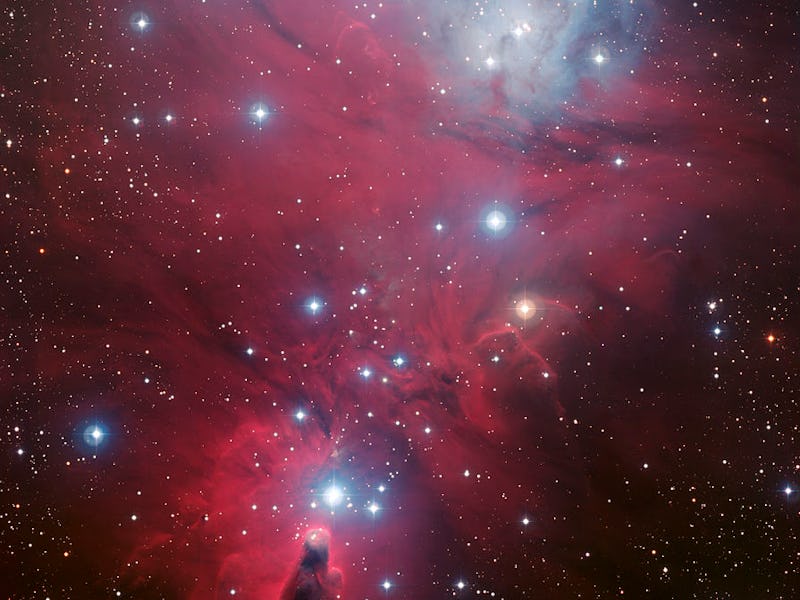A well-decorated living room might seem pretty festive around the holidays, but a little-known stellar formation 2,600 light-years away puts all our earthly festivities to shame.
Located in the constellation Monoceros lies the Christmas Tree Cluster. The cluster, which makes up part of the NGC 2264 region, is named for the triangular shape its young stars make. If you’ve had enough egg nog, it does sort of look like a Christmas tree, or just some very pretty shiny things.
If you scan the top to middle part of this image from the European Southern Observatory (ESO), you’ll see what I mean. Can you find the Christmas tree?
The Christmas Tree Cluster, in all its Yuletide glory.
William Herschel, who also discovered Uranus, first found the cluster in 1784 — but he didn’t know it. According to One Minute Astronomer, he only saw some stars at first — but on December 26, 1785, he noticed some “faint nebulosity near the cluster’s brightest star.” Almost by accident, Herschel had stumbled upon the cosmos’ most stellar Christmas tree.
Obviously, the “ornaments” on this tree are incomparable. At its base lies a very luminous star system called S Monocerotis, which, in the image above, can be seen toward the top. The system contains a blue-ish O-type main-sequence star. These types of stars can get 1 million times brighter than our sun.
The NGC 2264 region hosts another impressive resident called the Cone Nebula — a gas and dust cloud 2,700 light-years way. While it’s not as festive as its Christmas counterpart, the formation does look pretty darn beautiful on its own.
The cone nebula, imaged by Hubble.
While Christmas comes only once a year, the Christmas Tree Cluster can be enjoyed ‘year round.
“The Christmas Tree Cluster is visible to the naked eye in good conditions and appears quite striking in binoculars,” according to Constellation Guide. “The Christmas tree shape can be seen in small telescopes at low power. The cluster can be found using the brightest stars of Orion and following a line drawn from Bellatrix to Betelgeuse to the east and a little bit north.”
Who would have thought to look light-years away for some holiday cheer?
